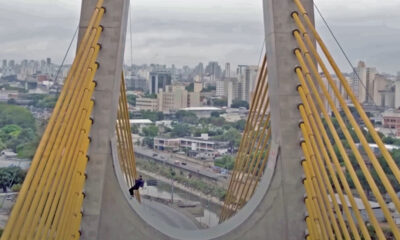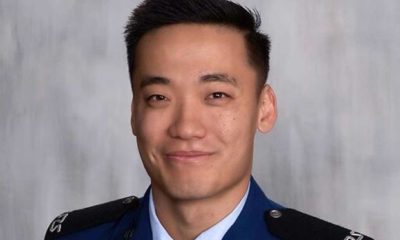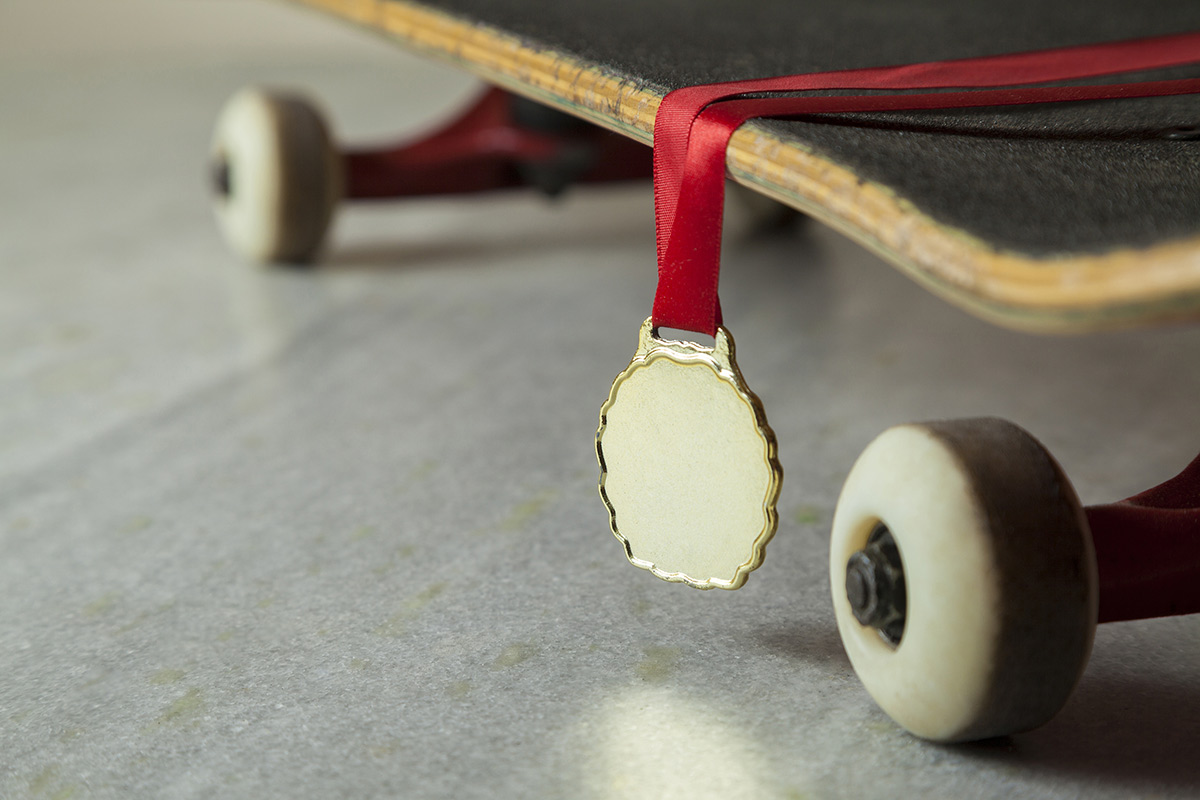
If you have been interested in the origin of skateboarding, you have probably been looking for information on skateboarding history. The sport was invented in the 1950s by surfers and became a fad in the 1970s. In addition, skateboarding history can be a fascinating topic in itself because it represents the roots of modern skating. Here are some historical facts about skateboarding. Read on to discover more about the sport’s roots.
Skateboarding was Invented by Surfers
Although skateboarding is commonly considered a sport, its roots can be traced back to surfing. In the early 1950s, surfers began transferring the sensation of riding the waves to the streets. These surfers became known as “asphalt surfers” and invented the skateboard. Developed in California and Hawaii, skateboarding started as a sport that allowed surfers to get around on short boards with metal wheels. The popularity of skateboarding grew in the late 1950s, and it was at this time that the toy industry became aware of the board with wheels and incorporated it into the culture of surfing.
The sport’s popularity peaked in the early 1960s, and manufacturers produced 50 million skateboards between 1963 and 1965. In 1965, the first skatepark was built at Surf City, a skateboarding resort in Tucson, Arizona. In the 1960s, the sport gained national attention when the first skateboard park opened, and it became a global phenomenon. During this time, skateboarding was featured on the TV show Surf’s Up and featured female skateboarder Patti McGee. In 1967, the first skateboarder magazine was published. The film Skaterdater received an Academy Award nomination for best short film.
The first skateboard was invented by George Powell. The wooden board was nailed to roller skate wheels, which enabled it to turn easily. George Powell’s creation is the ancestor of the modern skateboard. Although many people believe that skateboarding was invented by surfers, it actually dates back to the early history of California. And in fact, skateboarding was created by surfers! While surfing is the most popular form of skateboarding today, skateboarding was originally a sport for surfers and was later adopted by many other people.
It Became Popular in the 1950s
The sport of skateboarding was first invented in the 1950s by surfers in California, where it was known as asphalt surfing. These surfers made crude boards from planks and pressed layers of wood and metal wheels. Eventually, the board with wheels and wheelsets became popular, and the sport spread like wildfire across the US. The sport was first embraced by teenagers and adults alike, and spawned several incarnations.
The sport gained popularity in the United States between the 1950s and 1960s. Both the west coast and east coast saw a surge in skateboarding. During the post-war period, Hawaiian and Pacific cultures took root in the American psyche. Returned World War II veterans brought the Polynesian and Hawaiian cultural traditions home with them. The town of Malibu became a surfing destination and roller skateboards were used by surfers during low-wave conditions. Later, the sport became popular with clothing manufacturers.
The popularity of skateboarding was further fuelled by the growth of skateboard ramps and skateparks. In addition, skaters began to improve their tricks and built a lifestyle around them. In 1978, Alan Gelfand invented the “ollie trick” – the basis for almost all tricks performed today. Skateboarding was a popular sport until insurance costs skyrocketed in the late 1970s. As a result, skateparks and skateboarding parks ceased to be profitable.
It was a Fad in the 1970s
If there’s one decade that can be dubbed a “trendy era,” it’s the 1970s. The decade was marked by many fads, from the ending of the Vietnam war to the advent of digital technology, and everything in between. From shoulder-length hair to lava lamps, there were a wide variety of trends to follow. The following list will give you a brief look at a few of the decade’s most famous trends.
Mood rings: This fashion trend was incredibly popular in the late ’70s. These ring-shaped jewelry items were made to measure your finger temperature, and would change color accordingly. Different colors represented different feelings and moods. The 1970s were an era of environmental consciousness, and many fads of the decade returned, including cropped pants, crocheted clothing, and cheap clothes from abroad.
The “skin-tight” look: During the ’70s, skin-tight maroon unitards were popular. The most daring men left most of their shirt’s buttons undone, and tied their look together with oversized necklaces. The buttonless look, however, faded during the ’80s, as many people were still wearing their buttoned shirts.
Social movements: The 1970s saw many changes in technology, and the era of eight tracks was a prime example. The 1970s saw the emergence of social movements, civil rights, and even space exploration. These events helped shape the society, and resulted in many major changes. For example, the first Earth Day was celebrated on April 22, 1970. These social movements have inspired generations of people and have influenced many fads and trends in today’s world.
It was a Performance Art
The performance art of skateboarding aims for a perfect form for the sake of perfection. Like the paint on canvas, skateboarding has been completed as a rebellious act, often in illegal venues. The art of skateboarding has evolved from being an illegal activity to a creative form of expression. Both skateboarding and visual art have a long history and are linked to street culture. Artists have long admired skateboarding and have compared the two as an extension of the street culture.
The anti-establishment roots of skateboarding mean that it was marginalized until the past decade. Brian Anderson, the first openly gay elite skateboarder, said he felt unsafe when he was young, hearing slurs about his sexuality. Artist and skater Jeffrey Cheung observed the queer and female skaters creating brands and decks, and wished he could have had a company that embraced these individuals.
During the 1970s, skateboarding took on an evolutionary step when a slalom and freestyle contest was held at the Ocean Festival. There, the Zephyr team showed the world what skateboarding could do. They skated low and smooth, transforming the sport from a recreational pursuit to a serious performance art. With many members and many locations to skate at, they helped take skateboarding from being a fun hobby to a performance art.
Skateboarding was a Sport
Skateboarding is a popular recreational activity with a long history. It started during the 1960s when Jan and Dean performed “Sidewalk Surfin‘” on a popular TV show. The song was written by Beach Boys member Brian Wilson and featured the words “grab your board” and “don’t be afraid to try the latest sport in town.”
The popularity of skateboarding has led to the development of a subculture and a unique fashion style. Traditionally, skateboarders would wear baggy shorts, T-shirts, high-top sneakers, and read magazines like Thrasher and Skateboarder. In addition to the skater fashion, skaters also compete in vert and downhill racing competitions. But there are a few differences between skateboarding and the rest of the sport world.
The sport started off as a summer alternative to ice skating. The world’s first skateboard was invented between the early 1900s and the late 1950s. It was later popularized by surfers in California. In the late 1950s, it went underground before spreading to the rest of the world. It was not until the 1970s, when the toy industry recognized the potential of the skateboard with wheels, did it really become a popular sport?
It has Endured Ups and Downs in Popularity
Throughout its history, skateboarding has gone through ups and downs. The sport first gained popularity in the 1970s when Tom Stewart built the world’s first halfpipe in Encinitas, California. In 1978, Alan “Ollie” Gelfand invented the ollie, which allows skaters to do kickturns. Skateboarding was pushed back during this time because it was considered anarchist and frowned upon by government. However, the anti-establishment ethos that characterized the sport has continued today. The sport was in decline for several years, and skaters began practicing in empty pools, which were later converted into skate parks.
In the early 2000s, skateboarding was in decline, largely due to a decrease in skateboarding’s popularity. However, after a recent surge in skate park projects, skateboarding once again saw a spike in popularity. Skateparks, bowl skateboarding and bombing hills became popular again. However, skateboarding’s popularity dwindled when scootering began to dominate the scene. Moreover, skateboarding’s image was tarnished by the influx of scootering and video games.
As skateboarding has always been a niche sport, its popularity has fluctuated. Its popularity in the UK has never been as widespread as in the US. In the 1950s, skateboarding was first used by surfers as a low-wave sport. It was very popular in the US around 1963 and then fell again in the mid-1960s. The sport only gained a modest following in the UK in the mid-1990s.

Top Skating News
-
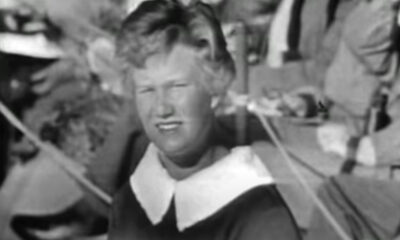

Figure Skating
/ 2 years agoRemembering Sjoukje Dijkstra: The Dutch Skating Legend Who Charmed the World
The world of figure skating has lost one of its brightest stars,
-
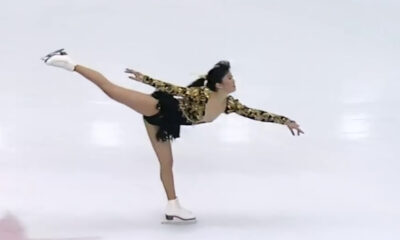

Figure Skating
/ 2 years agoThe Enduring Legacy of Kristi Yamaguchi
An Olympic gold medalist, a World Champion, and a beloved public figure.
-


Roller Skating
/ 2 years agoSkating Community Building: Tips for Organizing Local Events
Roller skating isn’t just a hobby; it’s a community. Whether you’re gliding around the...
-


Figure Skating
/ 2 years agoNational Skating Month Celebrating the Skating Community
National Skating Month: A Time for Skaters to Shine
-


-
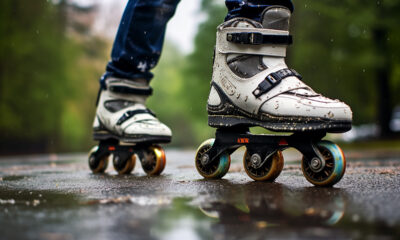

Inline Skating
/ 2 years agoTips and Techniques for Inline Skating in Extreme Conditions
Tips for Inline Skating in Challenging Weather
